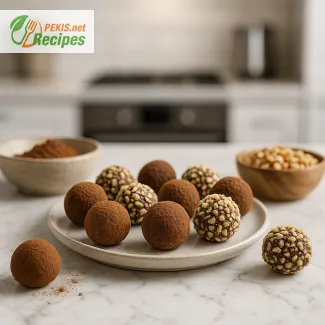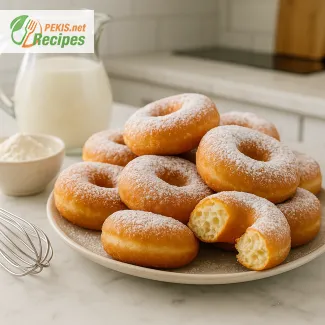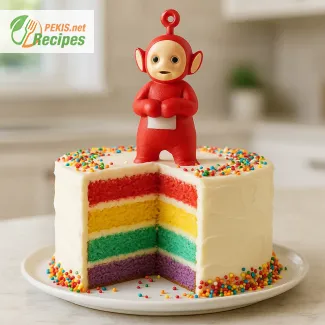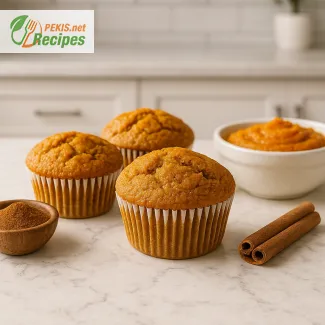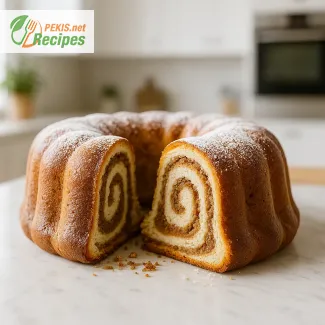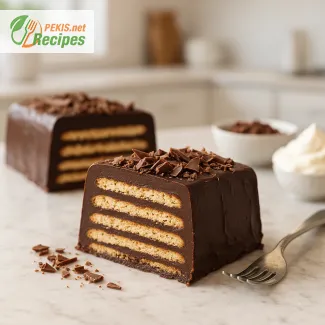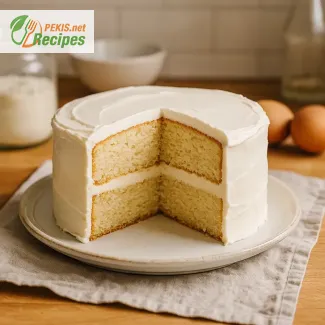
A light and tender gluten-free cake that everyone will love
Discover the ultimate vanilla cake without gluten or compromise
There’s something timeless about a classic vanilla cake — its delicate flavor, its soft crumb, the way it melts on the tongue. But when you're navigating a gluten-free lifestyle, finding a recipe that delivers the same moist, tender, and satisfying experience can feel like chasing a dream. That’s exactly why this gluten-free vanilla cake stands out: it’s everything you love about traditional cake, but completely gluten-free, without sacrificing taste, texture, or simplicity.
Whether you're celebrating a birthday, marking a special occasion, or just craving a slice of nostalgic comfort, this cake is your new go-to. With its buttery richness and airy, fluffy crumb, it doesn’t just meet gluten-free expectations — it exceeds them. The secret lies in the balance of quality ingredients and thoughtful technique, designed to mimic the structure of conventional flour cakes while keeping the crumb soft and moist.
What makes this gluten-free vanilla cake recipe truly exceptional is how incredibly versatile and reliable it is. Want to layer it with a rich buttercream or keep it minimal with a dusting of powdered sugar? It works perfectly both ways. Looking to adapt it for dairy-free or egg-free needs? This cake welcomes customizations while retaining its light texture and vanilla-forward flavor.
Unlike many gluten-free cakes that tend to be dry, dense, or overly crumbly, this version is beautifully moist, bakes evenly, and holds together like a dream. Whether you're serving guests who follow a gluten-free diet or simply want to enjoy a lighter, allergen-friendly dessert, this recipe is guaranteed to impress.
What makes this cake different from other gluten-free desserts
Many gluten-free desserts struggle with consistency, especially when it comes to cakes that are supposed to be soft and airy. With this recipe, the results are anything but disappointing. It’s been developed with a focus on achieving that just-right texture — one that springs back to the touch, slices cleanly, and melts in the mouth without the gritty aftertaste often associated with gluten-free flours.
The flavor profile is intentionally simple yet deeply satisfying. Pure vanilla extract takes center stage, complemented by a touch of butter or dairy-free alternative that enriches the batter without weighing it down. The balance ensures that each bite is layered with classic flavor and a natural sweetness that doesn't overpower.
What truly sets this cake apart, however, is its universality. It’s suitable for both casual bakers and experienced pastry lovers. The ingredients are easy to find, the instructions straightforward, and the end result consistently delightful — which means you can bake it with confidence, even if you’re new to gluten-free baking.
A cake that celebrates every occasion
Because of its clean, elegant flavor and neutral tone, this gluten-free vanilla cake is the ideal base for a wide range of cake variations. You can use it to create layer cakes, fill it with jams or creams, frost it with buttercream or ganache, or serve it plain with berries and whipped cream. Its structure holds up beautifully under decorations, making it perfect for wedding cakes, cupcakes, or tiered birthday celebrations.
But perhaps the greatest pleasure comes from enjoying it exactly as it is — a tender, aromatic vanilla cake that just happens to be gluten-free. It’s a reminder that a restricted diet doesn’t have to mean restricted joy, especially when dessert is involved.
Whether you’re baking for someone with celiac disease, gluten intolerance, or simply want a lighter alternative to traditional cake, this recipe is designed to please. The batter comes together effortlessly, bakes evenly without sinking, and releases from the pan without fuss. It’s a foolproof solution for anyone seeking a homemade gluten-free cake that looks as beautiful as it tastes.
Why this cake belongs in every gluten-free kitchen
Once you taste it, you’ll understand why so many have made this their go-to gluten-free cake recipe. It’s more than just a substitution for wheat-based desserts — it’s a delicious creation in its own right. The carefully selected blend of flours, the precise moisture content, and the rich vanilla aroma all work in harmony to create a cake that feels indulgent but never heavy.
This is the kind of cake that convinces even the skeptics — those who assume that gluten-free cakes are always second best — that gluten-free baking can stand shoulder to shoulder with the classics. It’s light enough to serve in summer, rich enough for colder seasons, and simple enough to bake just because.
If you’ve been searching for a gluten-free dessert that delivers on all fronts — flavor, texture, appearance, and ease — your search ends here. This recipe brings together everything you need for a cake that’s sure to be remembered, shared, and requested again and again.
1. Preheat and prepare the pans:
Preheat your oven to 175°C (350°F). Grease two 20 cm (8 inch) round cake pans and line the bottoms with parchment paper for easy removal.
2. Cream the butter and sugar:
In a large mixing bowl, beat the unsalted butter and granulated sugar together until the mixture is light and fluffy. This takes about 3–4 minutes using a hand or stand mixer.
3. Add eggs and vanilla:
Crack in the eggs one at a time, beating well after each addition. Add the vanilla extract and mix to combine.
4. Combine dry ingredients:
In a separate bowl, whisk together the gluten-free flour blend, baking powder, baking soda, salt, and xanthan gum.
5. Mix wet and dry ingredients:
Add the dry ingredients to the butter-egg mixture in three parts, alternating with the buttermilk, beginning and ending with the dry ingredients. Mix until just combined — do not overmix.
6. Divide and bake:
Divide the batter evenly between the prepared pans and smooth the tops with a spatula. Bake for 30–33 minutes, or until a toothpick inserted into the center comes out clean.
7. Cool:
Let the cakes cool in the pans for 10 minutes, then transfer them to a wire rack to cool completely before frosting or serving.
Creative ways to elevate your gluten-free vanilla cake at home
Expert tips and ingredient tweaks to make the most of your homemade baking
Baking a gluten-free vanilla cake at home already provides a wonderful foundation: it’s soft, moist, delicately sweet, and free from gluten. But what if you want to take it a step further? Whether you're aiming for a more indulgent flavor, healthier alternatives, or simply trying to avoid common baking pitfalls, there are numerous ways to enhance and personalize this recipe. By understanding how each component interacts in the batter and learning from typical mistakes, you can turn a basic vanilla cake into a standout dessert that rivals any bakery-made version.
Enhancing flavor with simple ingredient swaps
One of the simplest and most effective ways to upgrade this cake is by intensifying the vanilla flavor. Using vanilla bean paste instead of standard vanilla extract adds a deeper, more aromatic profile. It also speckles the cake with beautiful vanilla bean flecks, adding visual elegance.
Adding almond extract in small amounts (about 1–2 ml / ¼ to ½ tsp) can complement the vanilla and introduce a subtle nutty warmth. This works particularly well for cakes served at celebrations like weddings or holidays.
If you're looking for a slightly more complex flavor, consider replacing part of the buttermilk with coconut milk. The coconut adds a light tropical note without overpowering the vanilla base. For an earthier tone, a spoonful of maple syrup in place of a portion of the sugar can lend depth and moisture.
Improving texture and crumb quality
The softness of a gluten-free cake often depends on the flour mix used. If your current gluten-free flour blend produces a cake that feels too dense or dry, try incorporating a small amount of potato starch or sweet rice flour (mochiko). These starches hold moisture well and help create a lighter crumb.
For extra moisture and tenderness, you can also fold in sour cream or Greek yogurt (about 60 ml / ¼ cup) into the batter. This small adjustment results in a cake that’s more velvety and rich, especially when served chilled.
Adding one extra egg yolk — in addition to the 3 whole eggs — will also increase richness without making the cake too eggy. The yolk's fat helps bind and tenderize the crumb for a smoother mouthfeel.
Why homemade gluten-free cake is better than store-bought
When baking this recipe at home, you control the quality of ingredients — no preservatives, no artificial colors, and no unnecessary fillers. Most commercial gluten-free desserts aim for long shelf life, which often comes at the cost of flavor and freshness. A freshly baked homemade vanilla cake offers better taste, aroma, and texture — particularly in the delicate balance between moistness and structure.
You can also personalize the sweetness level, adjust flavors to suit your taste, and tailor the frosting or toppings. Plus, baking at home creates an emotional connection: it’s made with care, and that shows in the final bite.
Mistakes to avoid in gluten-free cake baking
One of the most common mistakes is overmixing the batter. Unlike wheat-based batters, gluten-free batters don’t benefit from extensive mixing — in fact, it can lead to a dense, rubbery cake. Stop mixing as soon as the ingredients are combined.
Another error is skipping the parchment paper when preparing your pans. Gluten-free cakes are slightly more delicate and prone to sticking, so proper pan preparation is essential for clean removal.
Baking time is also critical. Underbaking leads to gummy centers, while overbaking dries out the delicate crumb. Always use the toothpick test, but start checking 3 minutes before the estimated time.
Lastly, don’t forget to let your cake cool properly. Gluten-free cakes continue to set as they cool; slicing too soon can result in a fragile, crumbly texture.
Healthier modifications for a cleaner dessert
Want to lighten the nutritional profile? Replace half the butter with unsweetened applesauce for a lower-fat version. You can also swap granulated sugar for coconut sugar or light brown sugar, which add a rich caramel note and reduce the glycemic impact slightly.
For an even more wholesome version, try using oat flour or almond flour in place of part of the gluten-free mix. These provide natural fiber, healthy fats, and extra flavor — though they may affect structure slightly, so balance is key.
If you're aiming to cut back on sugar altogether, consider using a monk fruit sweetener blend or erythritol, both of which perform well in baking without the aftertaste common in artificial sweeteners.
Adding texture and creativity through fillings and toppings
Once you’ve mastered the base cake, experiment with creative additions. A vanilla bean pastry cream layer between the cakes can add moisture and a luxurious texture. Or, swirl in a homemade fruit compote — raspberry or lemon curd work especially well.
As for frostings, a vanilla mascarpone frosting or coconut whipped cream offers a lighter alternative to traditional buttercream. You can even top the cake with edible flowers or gluten-free cookie crumbles for added crunch and visual appeal.
For seasonal flair, sprinkle the top with toasted chopped nuts, shredded coconut, or a light dusting of cinnamon in autumn and winter months. Each topping introduces a new layer of flavor and texture, while maintaining the cake’s base integrity.
Creative gluten-free bakers
When it comes to gluten-free baking, precision and balance are everything — but that doesn’t mean you can’t explore. From ingredient upgrades to personalized toppings and healthier alternatives, there are endless ways to make this vanilla cake recipe truly your own. With each small adjustment, you not only improve taste and nutrition but also enhance the joy of baking something delicious and meaningful in your own kitchen.
Contains allergens:
- Eggs
- Dairy (buttermilk, butter)
- May contain traces of nuts depending on the gluten-free flour used
Gluten-free: Yes
Substitution tips to remove allergens:
- Replace eggs with 3 tbsp (45 ml) of aquafaba or 3 tbsp (45 ml) of applesauce for egg-free version
- Use dairy-free butter and plant-based buttermilk (e.g., almond milk + lemon juice) to make it fully dairy-free
- Vitamin A: 210 µg (supports skin, vision, and immune function)
- Calcium: 65 mg (supports bones and teeth)
- Iron: 1.1 mg (supports red blood cell function)
- Magnesium: 10 mg (supports muscle and nerve function)
- Potassium: 90 mg (regulates fluid balance and nerve signals)
- Phosphorus: 65 mg (supports energy metabolism and bone health)
- Vitamin E: 0.8 mg (protects cells from oxidative stress)
- Selenium: 5 µg (supports immune defense and thyroid health)
- Beta-carotene: 50 µg (precursor to vitamin A, supports cell regeneration)
